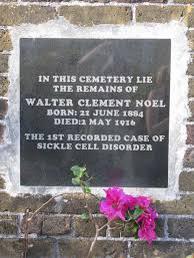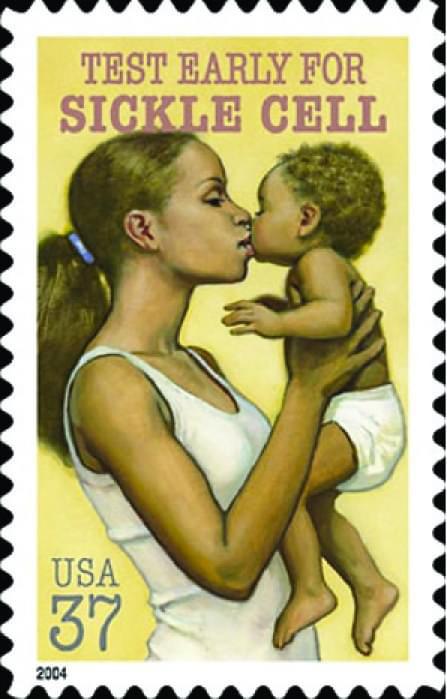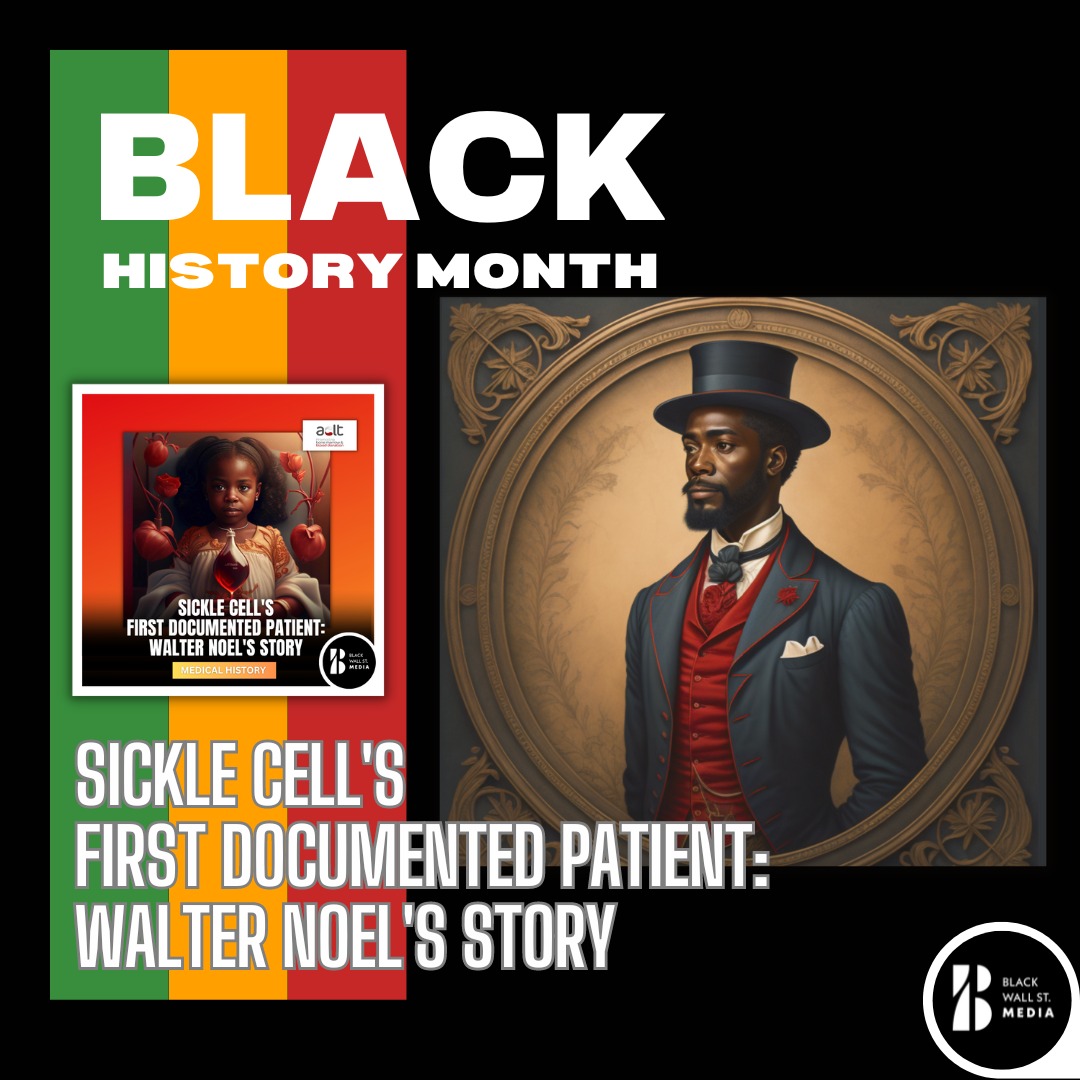Medical History
Sickle Cell's First Documented Patient: Walter Noel's Story
“In the annals of medical history, often hidden among the celebrated discoveries, is the profound journey of a patient whose story becomes the key to unlocking knowledge”
Black Wall St. MediaContributor
Historical reviews of medical discoveries often celebrate the physicians or scientists behind groundbreaking findings, the scientific context of their time, or the intellectual climate that fostered innovation.
Rarely do these retrospectives focus on the individual patient whose experience catalyzed the discovery. Privacy concerns and a perception that the afflicted individual may not be of universal interest have contributed to this oversight.
However, the case of #Walter Clement Noel, the first documented patient with #sickle-cell-disease, offers a compelling narrative.
This article delves into the life of Walter Clement Noel, whose struggles with this condition in the early 20th century played a pivotal role in our understanding of sickle cell disease.
Walter Clement Noel’s Early Life:

AI GENERATED IMAGE OF WALTER NOEL
Walter Clement Noel was born in 1884 on a sprawling estate in the rugged terrain of northern #Grenada, a British colony in the Caribbean.
He hailed from a wealthy family of landholders, affording him access to quality education. Noel’s educational journey took him to #Harrison-College in #Barbados, where he completed his undergraduate studies in the summer of 1904.
Noel’s Journey to the United States:
In September 1904, Noel embarked on a life-changing journey, sailing from Barbados to New York aboard the SS Cearense. During the week-long voyage, he developed a leg ulcer, a common complication of sickle cell disease.
Upon arrival in New York, Noel sought medical attention, where his leg wound was treated with topical iodine, leading to its rapid healing.
He then traveled to Chicago, where he had been accepted as a dental student at the Chicago College of Dental Surgery.
Noteworthy was the fact that in 1904, it was uncommon for a person of African descent like Noel to study in the United States outside of traditionally “blacks-only” secondary schools.
However, Noel’s affluence, combined with his foreign status, paved the way for his educational opportunities in a slowly expanding landscape for black students.
Noel’s Struggle with Illness:
In late November 1904, Noel faced a significant health challenge when he developed respiratory problems, now recognized as a leading acute cause of death in patients with sickle cell disease.
These issues persisted for over a month, leading him to seek medical care at Chicago’s Presbyterian Hospital, a private facility. Here, he encountered Dr. Ernest Irons, who would play a crucial role in documenting his case.
Dr. Irons performed a peripheral blood smear, a relatively new diagnostic tool at the time, and observed abnormal, pear-shaped and elongated blood cells in Noel’s sample.
This striking finding prompted discussions with Dr. James Bryan Herrick, his supervising physician. Despite extensive efforts to identify the cause of these peculiar blood cells, including suspicions of malaria or parasitic infections, the root cause remained elusive.
With supportive care, Noel eventually recovered and resumed his studies.
Noel’s Continued Medical Struggles:
Over the next two and a half years, Noel’s path through dental school was marred by several illnesses. He faced hospitalisation for bronchitis, a two-month confinement for a “bilious and muscular attack” (a common issue in sickle cell syndromes), and frequent visits from Dr. Irons for knee pain and bronchitis.
Dr. Irons diligently documented Noel’s case, describing him as “bright and intelligent” and providing these records to Dr. Herrick upon his completion of training.
Dr. Irons later gained prominence as a rheumatologist, eventually becoming the president of the American College of Physicians and the American Medical Association in the 1940s.
Dr. Herrick’s Contribution and Beyond:
Dr. James Bryan Herrick, known for describing sickle cell disease in 1910, presented Noel’s case at a national meeting that same year. However, he did not credit Dr. Irons for his valuable contributions.
Instead, Dr. Herrick shifted his focus to other matters, eventually gaining recognition for being the first to describe myocardial infarction in 1912. It wasn’t until a few months after Noel’s case was published that a similar case emerged in rural Virginia, involving a patient named Ellen Anthony.
Subsequently, more instances came to light, and by the early 1920s, there was enough collective experience to formally name the condition “sickle cell anemia.”
In the 1940s, the inheritance pattern and physical chemistry of hemoglobin S were sufficiently understood for renowned scientist Linus Pauling to call sickle cell anemia “the first molecular disease.”

Noel rests in a churchyard overlooking the Caribbean Sea in the parish of Sauteurs, alongside his sister Jane and his father, both of whom died prematurely from pulmonary disease and kidney disease, respectively.
Noel’s Later Life and Passing:
After graduating from dental school in 1907, Noel returned to Grenada to establish a private general dentistry practice in the capital city of St. George’s.
His mother owned the building where the practice was situated, and Noel lived upstairs while his offices operated at street level.
Despite limited information about his life between returning to Grenada and his final illness, it is evident that he was successful enough to hire an assistant. However, he never married. In 1915,
Noel drafted a will, suggesting growing concerns about his health.
In April 1916, he overexerted himself, leading to a fatal outcome. Following his attendance at a horse race, a long journey home, and a bath all on the same day, he developed a “chill,” followed by a severe respiratory infection.
Noel’s condition deteriorated steadily, leading to his passing in May 1916, at the age of 32.
His death certificate attributed the cause to “asthenia from pneumonia.”

The stamp, designed by illustrator James Gurney
Legacy and Sickle Cell Disease Awareness:
Walter Clement Noel’s journey through life, education, and illness was instrumental in the early understanding of sickle cell disease.
His experience paved the way for subsequent research and awareness of this genetic disorder.
Today, approximately 8% of African Americans are asymptomatic heterozygotes for hemoglobin S, and about 1 in 400 has sickle cell disease.
In 2004, the US Post Office released a postage stamp (Scott No. 3877) as part of an initiative to encourage early testing for sickle cell disease.
While not a semipostal stamp aimed at raising funds, it was designed to increase social awareness about the importance of early testing.
Early recognition and treatment of sickle cell disease can prevent complications and save lives. The stamp, designed by illustrator James Gurney, known for his Dinotopia book series for children, stands as a tribute to the enduring legacy of Walter Clement Noel and the ongoing battle against sickle cell disease.
”Noel's story reminds us that even in the face of adversity, one individual's experience can lead to profound contributions to medical knowledge and improved healthcare for future generations.
Black Wall St. MediaContributor















